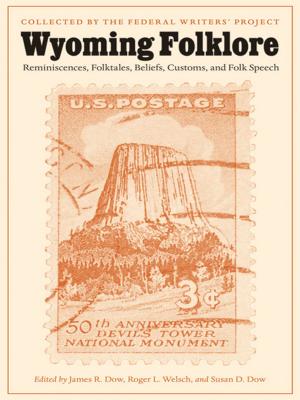Range Wars
The Environmental Contest for White Sands Missile Range
Nonfiction, Science & Nature, Nature, History, Americas, United States| Author: | Ryan H. Edgington | ISBN: | 9780803255630 |
| Publisher: | UNP - Nebraska | Publication: | July 1, 2014 |
| Imprint: | University of Nebraska Press | Language: | English |
| Author: | Ryan H. Edgington |
| ISBN: | 9780803255630 |
| Publisher: | UNP - Nebraska |
| Publication: | July 1, 2014 |
| Imprint: | University of Nebraska Press |
| Language: | English |
Established in south-central New Mexico at the end of World War II, White Sands Missile Range is the largest overland military reserve in the western hemisphere. It was the site of the first nuclear explosion, the birthplace of the American space program, and the primary site for testing U.S. missile capabilities.
In this environmental history of White Sands Missile Range, Ryan H. Edgington traces the uneasy relationships between the military, the federal government, local ranchers, environmentalists, state game and fish personnel, biologists and ecologists, state and federal political figures, hunters, and tourists after World War II—as they all struggled to define and productively use the militarized western landscape. Environmentalists, ranchers, tourists, and other groups joined together to transform the meaning and uses of this region, challenging the authority of the national security state to dictate the environmental and cultural value of a rural American landscape. As a result, White Sands became a locus of competing geographies informed not only by the far-reaching intellectual, economic, and environmental changes wrought by the cold war but also by regional history, culture, and traditions.
Established in south-central New Mexico at the end of World War II, White Sands Missile Range is the largest overland military reserve in the western hemisphere. It was the site of the first nuclear explosion, the birthplace of the American space program, and the primary site for testing U.S. missile capabilities.
In this environmental history of White Sands Missile Range, Ryan H. Edgington traces the uneasy relationships between the military, the federal government, local ranchers, environmentalists, state game and fish personnel, biologists and ecologists, state and federal political figures, hunters, and tourists after World War II—as they all struggled to define and productively use the militarized western landscape. Environmentalists, ranchers, tourists, and other groups joined together to transform the meaning and uses of this region, challenging the authority of the national security state to dictate the environmental and cultural value of a rural American landscape. As a result, White Sands became a locus of competing geographies informed not only by the far-reaching intellectual, economic, and environmental changes wrought by the cold war but also by regional history, culture, and traditions.















